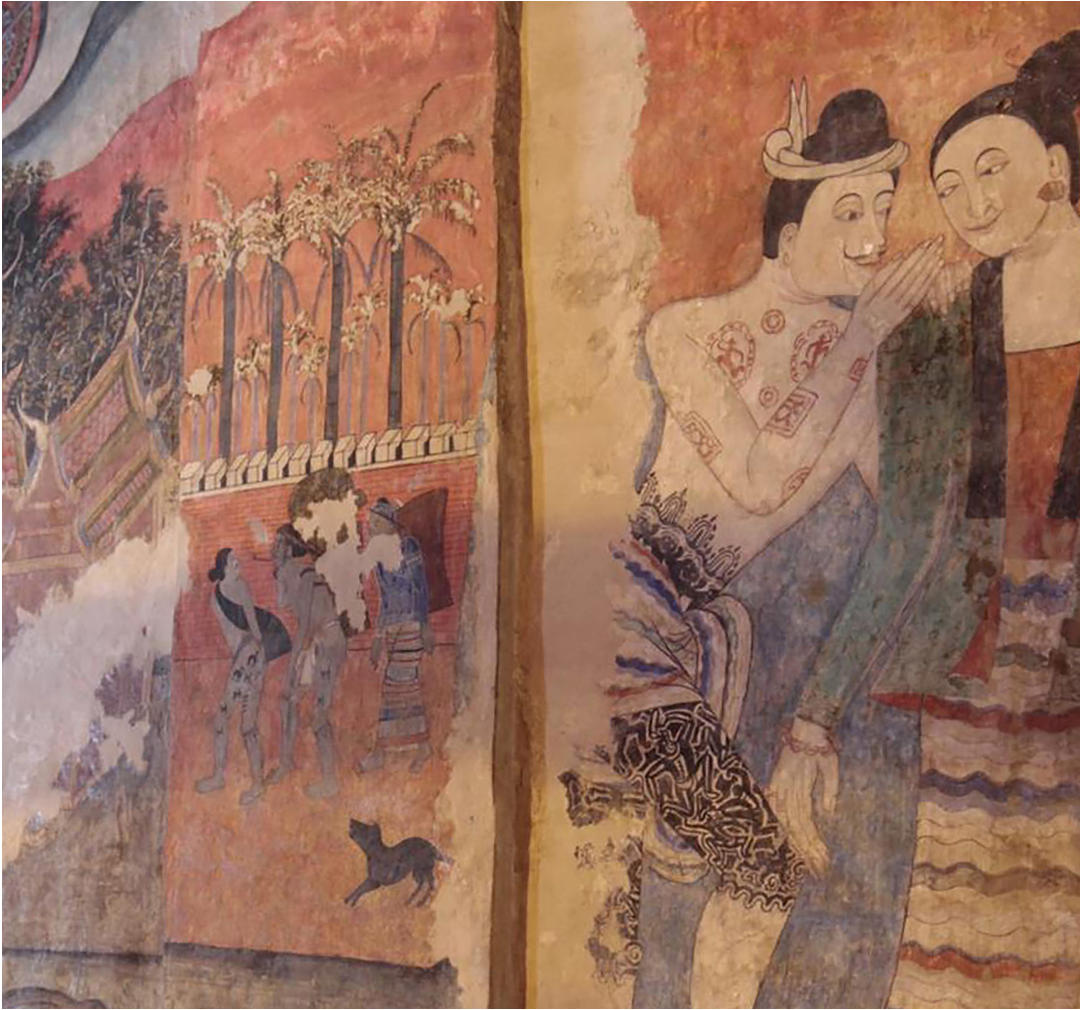A Study of “Khat-ta-na-ku-marn”: the Narrative in the Murals of Phumin Temple, Nan Province
DOI:
https://doi.org/10.69598/sbjfa243897Keywords:
Khat-Tha-Na-Khu-Marn Allegory, Murals at Phu Min temple, AllegoryAbstract
This research aims to (1) Study “Khat-Tha-Na-Khu-Marn” allegory appears in the murals at Phu Min temple, Nan Province (2) Analyze social conditions, local traditions, and culture of Nan province in the past that reflected through the story of Khat-Tha-Na-Khu-Marn. The research instruments are interview form, and content analysis form. The research targets are Phu Min temple, Phu Min temple guide, Museum of Nan Identity, local literary experts, and local experts. The researcher went to Nan province to collect data of Khat-Tha-Na-Khu-Marn Allegory from scriptures, documents, interviews, and people. Then, use the mural pictures to analyze the sequence of story. After that, compose the story and publish. The results of the research is the story “Khat-Tha-Na-Khu-Marn Allegory” from beginning to end which is easy to read, in the style of the researcher by referring from many documents. Since, the artists created murals in the 24th century, found that Murals at Phu Min temple, Khat-Tha-Na-Khu-Marn Allegory, and the social conditions of Nan province in the past are related. Which the story “Khat-Tha-Na-Khu-Marn” outline that is widely told in the north of Thailand, will determine the overview of the mural. As for the details of the murals in each part also add scenes of folk life, culture, traditions, beliefs, social conditions, influences from other localities in Nan. Affect to the details of Khat-Tha-Na-Khu-Marn Allegory in the murals of Phu Min temple which are different from other places.
Downloads

Downloads
Published
How to Cite
Issue
Section
License
The journal's editorial team does not have to agree with the views and comments in the author's article, nor are they responsible for the comments.











